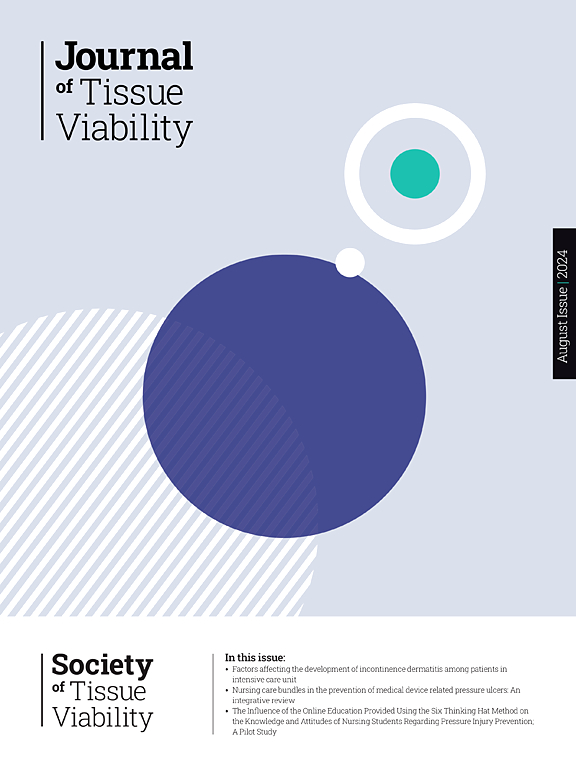改善静脉高压和下肢溃疡患者长期压迫治疗的一致性:一项德尔福研究-患者队列
IF 2.4
3区 医学
Q2 DERMATOLOGY
引用次数: 0
摘要
尽管努力了解影响因素,下肢静脉性溃疡(VLU)患者的压迫治疗(CT)的一致性一直不理想[2-4]。vlu是慢性静脉功能不全(CVI)的并发症,其中静脉功能不全或狭窄导致毛细血管通透性增加,液体潴留,最终导致溃疡。CT是管理CVI和预防vlu的黄金标准。CT的作用是增强静脉回流,降低静脉压,减少停滞。然而,确保患者与CT的一致性仍然是一个挑战。德尔菲研究探讨影响VLU患者CT一致性的因素。该研究确定了16个促进因素和18个障碍,为了解患者和谐的复杂性提供了见解。该研究使用肯德尔W系数的分析显示,参与者对这些影响因素达成了适度的共识。提高CT一致性的努力可能受益于解决已确定的障碍,同时利用促进者,重点是个性化护理方法,以提高结果。本文章由计算机程序翻译,如有差异,请以英文原文为准。
Improving concordance with long-term compression therapy amongst people with venous hypertension and lower leg ulceration: A Delphi study- patient cohort
Concordance rates for compression therapy (CT) among patients with venous leg ulcers (VLU) have consistently been suboptimal, despite efforts to understand influencing factors [2–4]. VLUs arise as a complication of chronic venous insufficiency (CVI), where venous incompetence or stenosis causes increased capillary permeability, fluid retention, and eventual ulceration [1].
CT is the established gold standard for managing CVI and preventing VLUs. CT works by enhancing venous return, reducing venous pressure, and minimising stasis. However, ensuring patient concordance to CT remains a challenge.
A Delphi study explored factors affecting CT concordance among VLU patients. The study identified 16 facilitators and 18 barriers, offering insights into the complexities of patient concordance. The study's analysis using the Kendall W Coefficient showed moderate consensus among participants regarding these influencing factors [9].
Efforts to improve CT concordance may benefit from addressing the identified barriers while leveraging facilitators, with a focus on personalised care approaches to enhance outcomes.
求助全文
通过发布文献求助,成功后即可免费获取论文全文。
去求助
来源期刊

Journal of tissue viability
DERMATOLOGY-NURSING
CiteScore
3.80
自引率
16.00%
发文量
110
审稿时长
>12 weeks
期刊介绍:
The Journal of Tissue Viability is the official publication of the Tissue Viability Society and is a quarterly journal concerned with all aspects of the occurrence and treatment of wounds, ulcers and pressure sores including patient care, pain, nutrition, wound healing, research, prevention, mobility, social problems and management.
The Journal particularly encourages papers covering skin and skin wounds but will consider articles that discuss injury in any tissue. Articles that stress the multi-professional nature of tissue viability are especially welcome. We seek to encourage new authors as well as well-established contributors to the field - one aim of the journal is to enable all participants in tissue viability to share information with colleagues.
 求助内容:
求助内容: 应助结果提醒方式:
应助结果提醒方式:


